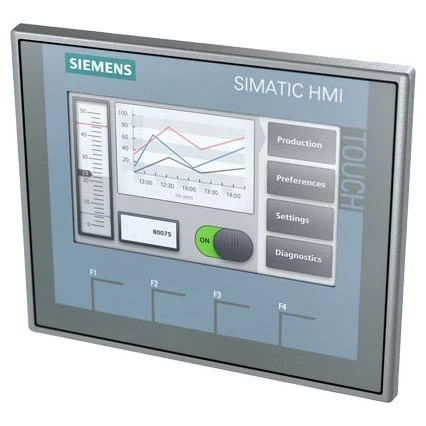Interface
An Interface is a critical component in modern automation systems, facilitating communication between various devices, systems, and controllers. It serves as the bridge that ensures seamless data transfer and real-time interaction between disparate devices, networks, and platforms. Whether it's between PLCs, HMIs, sensors, or SCADA systems, interfaces allow for smooth integration of different protocols and technologies.Today’s interfaces come with advanced features such as protocol conversion, data aggregation, and real-time monitoring capabilities, making them essential in complex industrial environments. They support various communication standards including Ethernet/IP, PROFINET, Modbus, and RS-232/RS-485, ensuring compatibility across a wide range of devices and systems.With a user-friendly interface for configuration and diagnostics, these components simplify system integration, reduce operational complexity, and enhance system reliability. Industries such as automotive, manufacturing, energy, and pharmaceuticals rely on interfaces to improve operational efficiency and optimize data exchange between automation systems.An advanced interface not only connects devices but also enables real-time control, system diagnostics, and improved decision-making capabilities, making it an indispensable tool in modern industrial automation solutions.
Seamless Connectivity, Unmatched Performance
Transform your automation systems with a reliable interface that bridges devices, protocols, and technologies for enhanced operational efficiency.
Contact UsWhy Is an Interface Critical in Modern Automation Systems?
In modern industrial environments, efficient and reliable communication between devices and systems is essential for seamless operations. An interface plays a pivotal role by enabling different devices—such as PLCs, HMIs, sensors, and SCADA systems—to communicate with each other, even if they operate using different communication protocols. Without proper interfaces, systems would be unable to exchange data, making integration, monitoring, and control challenging.The primary function of an interface is protocol conversion—allowing systems using different communication standards to communicate effectively. For example, a protocol like Modbus can be integrated with devices supporting PROFINET or Ethernet/IP, ensuring that all components of a control system can work together. This level of interoperability is crucial in automation, where different devices from multiple manufacturers need to work seamlessly in real-time.Furthermore, interfaces enable data aggregation, allowing users to access and process data from various sources in a centralized manner. This enhances decision-making and performance monitoring. With the rise of Industry 4.0, where smart systems and IoT devices dominate, interfaces are integral to ensuring that data flows efficiently across networks, making them a cornerstone of modern automation solutions.In summary, an interface is critical because it enables seamless integration, protocol compatibility, and real-time monitoring, all of which are essential for achieving optimal performance in automated systems.
Efficient, Reliable, and Scalable Connectivity with Our Advanced Interface Solutions
-
 Seamless Protocol IntegrationEnsure smooth communication between devices, regardless of their communication protocols (Ethernet/IP, Modbus, PROFINET, etc.).
Seamless Protocol IntegrationEnsure smooth communication between devices, regardless of their communication protocols (Ethernet/IP, Modbus, PROFINET, etc.). -
 Real-Time Data ExchangeEnable efficient real-time data transfer between automation systems for improved control and monitoring.
Real-Time Data ExchangeEnable efficient real-time data transfer between automation systems for improved control and monitoring. -
 Scalable SolutionEasily integrate multiple devices and systems into your existing infrastructure, providing flexibility for future upgrades.
Scalable SolutionEasily integrate multiple devices and systems into your existing infrastructure, providing flexibility for future upgrades. -
 User-Friendly ConfigurationSimplify system integration and diagnostics with easy-to-use configuration tools, reducing setup and maintenance time.
User-Friendly ConfigurationSimplify system integration and diagnostics with easy-to-use configuration tools, reducing setup and maintenance time.


